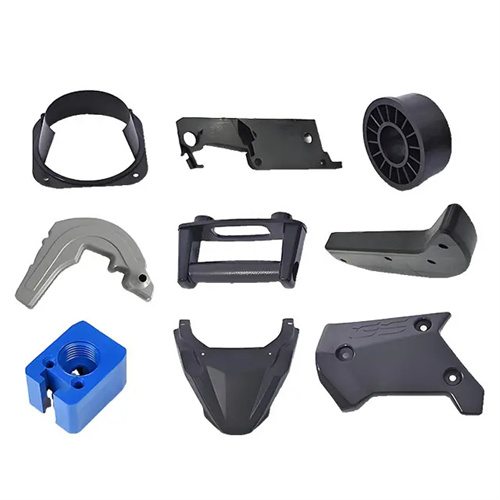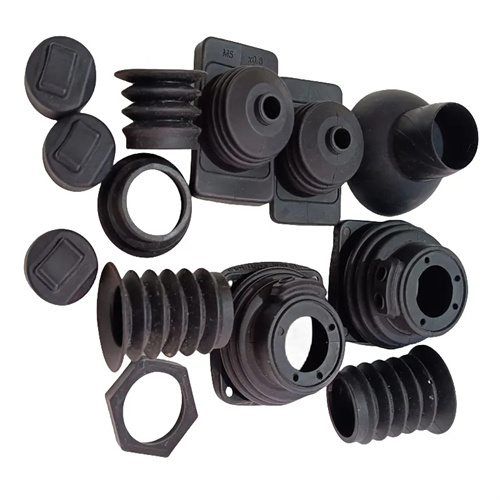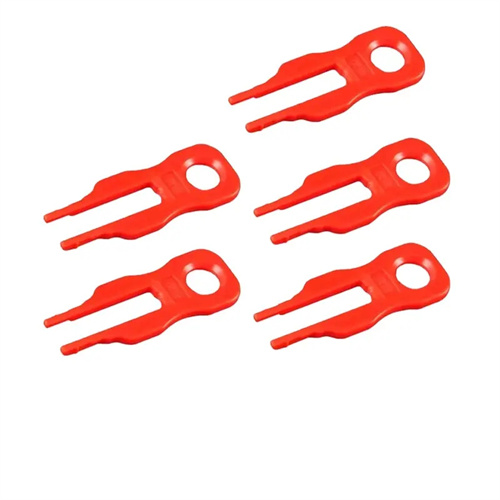Determine the number of cavities in injection molding
Determining the number of cavities in an injection mold is a key decision in injection molding production planning, directly impacting production efficiency, cost control, and product quality. It requires comprehensive consideration of multiple factors, including part size, production batch size, equipment capacity, and economic benefits. The number of cavities refers to the number of parts a mold can produce at a time. Single-cavity molds are suitable for precision or large parts, while multi-cavity molds are ideal for smaller, high-volume products, significantly improving production efficiency. For example, in the production of mobile phone cases (monthly output of 500,000 units), using an eight-cavity mold can reduce production time by 7/8 compared to a single-cavity mold, significantly reducing labor and energy costs per unit. However, in the production of automobile bumpers (monthly output of 10,000 units), the large size of the parts (over 1.5 meters in length) and the limited clamping force of the injection molding machine necessitate the use of a single-cavity mold. Properly determining the number of cavities can achieve the optimal balance between production capacity and cost while ensuring product quality.

The key factors in determining the number of cavities are production batch size and delivery cycle. The required molding efficiency must be calculated based on market demand. The calculation formula is: Number of cavities = (Daily demand × Production days) / (Injection molding machine daily capacity × Mold life coefficient), where injection molding machine daily capacity = (24 × 60 / Molding cycle time) × Effective production time percentage (typically 85%). For example, if monthly demand for a particular plastic part is 300,000 pieces, the molding cycle time is 40 seconds, and the injection molding machine operates for 20 hours (1,200 minutes) of effective production per day, then daily capacity = (1,200 × 60 / 40) × 85% = 15,300 pieces. If production is required to be completed in 30 days, the number of cavities = 300,000 / (15,300 × 30) = 0.65, rounded up to 1 cavity. If monthly demand increases to 1 million pieces, the number of cavities becomes 2.17, requiring a four-cavity mold (taking mold life and equipment load redundancy into account). In addition, 10-20% of production capacity redundancy must be reserved to deal with equipment failures or temporary increases in orders.

The technical parameters of the injection molding machine are hard constraints on the number of cavities, primarily including clamping force, maximum shot size, and tie-bar spacing. The clamping force must satisfy the following equation: “Total injection pressure × total cavity projected area ≤ machine clamping force × 0.8” (0.8 being a safety factor). For example, if the machine clamping force is 1000kN, the projected area of a single molded part is 50cm², and the melt flow pressure is 40MPa (400bar), then the required clamping force per cavity = 50cm² × 40MPa = 200kN. A maximum of four cavities can be set (4 × 200 = 800, ≤ 1000 × 0.8 = 800). The maximum injection volume must ensure that “single-mold injection volume ≤ injection molding machine maximum injection volume × 0.8.” For example, if the injection molding machine’s maximum injection volume is 500g, the weight of a single molded part is 50g, and the runner aggregate weighs 100g, then the total weight per mold = 50 × n + 100 ≤ 500 × 0.8 = 400. Solving for n, we get n ≤ 6, meaning a maximum of 6 cavities. The tie-bar spacing must be greater than the maximum mold dimensions to prevent mold installation problems. For example, if the tie-bar spacing on the injection molding machine is 400 × 400mm, the mold length and width must be within 380 × 380mm, limiting the number of cavities.

Economic benefit analysis is the ultimate consideration in determining the number of cavities, requiring a comparison of the payback periods for different cavity count options. Multi-cavity molds have higher initial investment (a two-cavity mold costs approximately 1.5-1.8 times that of a single-cavity mold, and a four-cavity mold costs 2.5-3 times), but offer lower per-unit production costs. Single-cavity molds offer lower initial investment but lower production efficiency and higher long-term labor and energy costs. Calculating the “break-even production volume” can determine the optimal solution: when expected production volume exceeds the break-even point, a multi-cavity mold becomes more economical. For example, a single-cavity mold costs 50,000 yuan, with a processing fee of 0.5 yuan per unit; a four-cavity mold costs 150,000 yuan, with a processing fee of 0.3 yuan per unit. The break-even point is (15-5) / (0.5-0.3) = 500,000 units. This means that when production volume exceeds 500,000 units, the four-cavity mold is more cost-effective. In addition, the mold maintenance cost must also be considered. Due to the complex structure of multi-cavity molds, the maintenance cost is 20-30% higher than that of single-cavity molds, which needs to be included in the cost accounting.

When determining the number of cavities, it’s important to balance product quality and mold complexity, avoiding the blind pursuit of a high cavity count. Excessive cavities can lead to unbalanced melt flow within the runners, increasing differences in filling time and pressure between cavities. This can easily lead to problems like uneven part weight and dimensional deviation. This is especially true for precision parts (with dimensional tolerances within ±0.05mm), so the number of cavities should typically be limited to four. Mold structural complexity increases exponentially with the number of cavities. Molds with eight or more cavities require a hot runner system for balanced feeding and higher machining precision (part tolerances within ±0.01mm). Otherwise, mold sticking or malfunctions are likely to occur. For example, when producing electronic connectors with high precision requirements (with tolerances within ±0.02mm), molds with two to four cavities, rather than eight, are typically used, even for high production volumes, to ensure consistent parts across cavities. Furthermore, part removal methods must be considered. Multi-cavity molds require automated part removal equipment, which increases equipment investment. These factors must be comprehensively evaluated when determining the number of cavities.
